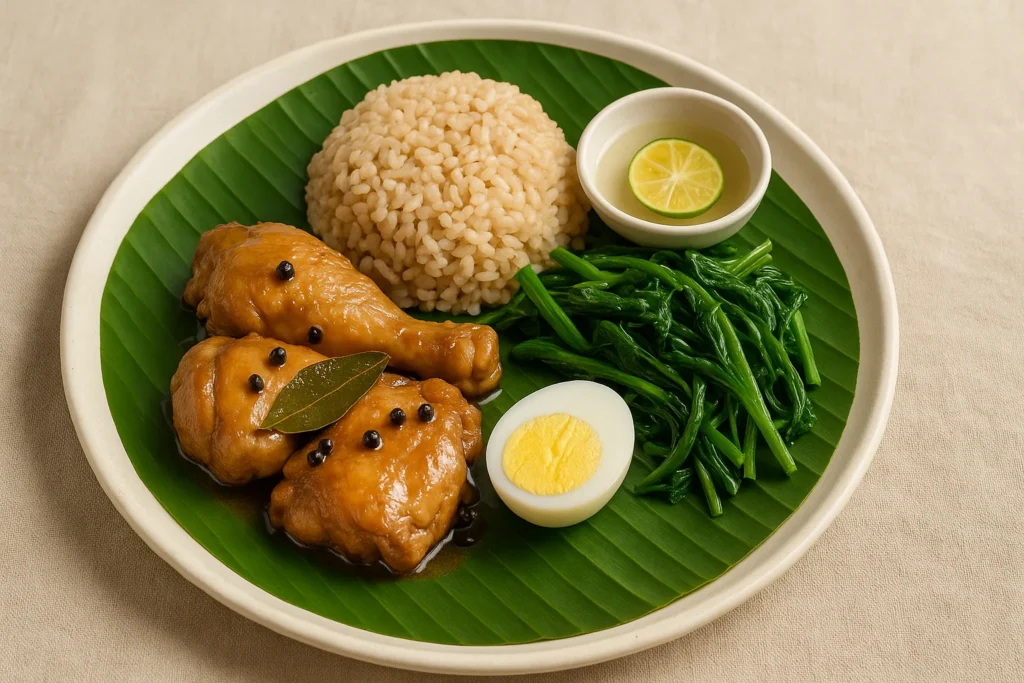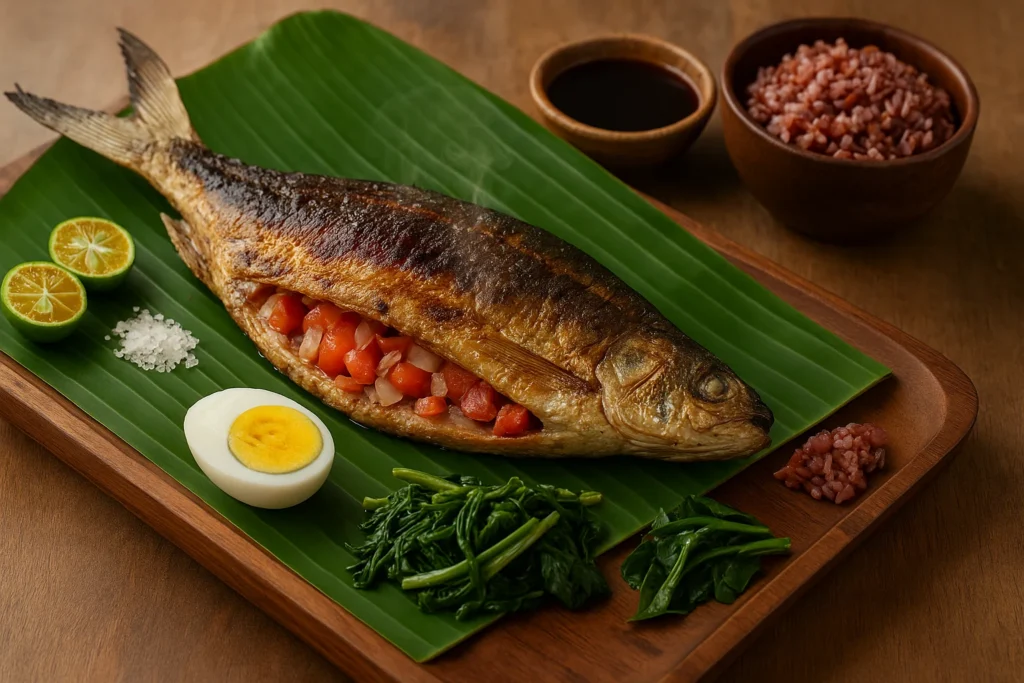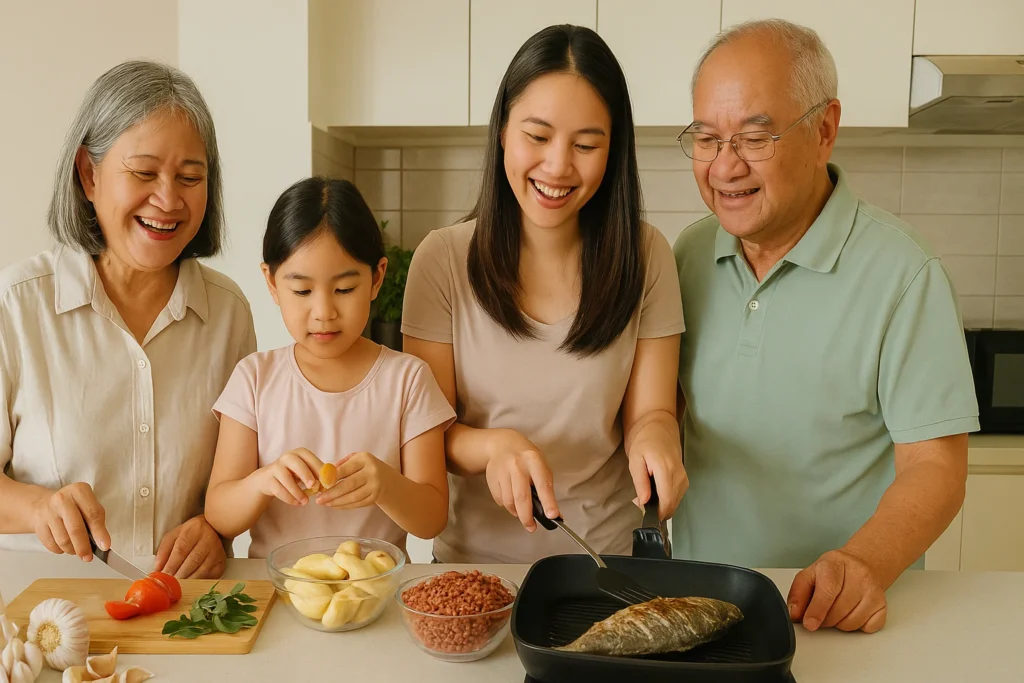Table of Contents
Healthy Filipino recipes for weight loss don’t have to be complicated — and they definitely don’t have to be boring. If you love eating Filipino dishes, you’re already halfway there. You just need to tweak how you cook and what you pair them with. Simple Pinoy dishes that help you shed pounds — without giving up your favorite food. Book your free consultation with us and let’s personalize your nutrition journey together.
“Nearly 1 in 4 Filipino adults are overweight.” — World Health Organization
When I read that, I paused as I looked around the mall and saw the truth of it. As Filipinos, we don’t overeat because we’re lazy — we eat to connect, to celebrate, to cope. But sometimes, it catches up with us.
That’s what happened to my friend last year. She wasn’t even eating junk food that much. Just the usual: rice, ulam, soda, bread. Then one day, she realized none of my clothes fit right. So she made a choice — to work with YOU% and not to go on a strict diet, but to find healthy Filipino recipes for weight loss that she could actually stick to.
Fast forward a few months later — she lost weight, she feels more energetic, and she’s still eating the food she loves. Just smarter. Let me show you how we helped her do it with these 7 easy meals.
1. Chicken Adobo — Lean and Flavorful

This is the heart of any Filipino household. You can’t talk about healthy Filipino recipes for weight loss without mentioning adobo. But instead of drowning it in soy sauce and using fatty cuts, we do it lean — skinless chicken breast or thigh, simmered in garlic, vinegar, peppercorns, and just a dash of low-sodium soy sauce.
One weekend, I cooked a big batch using just those ingredients — no oil, no sugar, no shortcuts. It came out so flavorful that even my partner, who doesn’t like “healthy food,” asked for seconds. I served it with brown rice and sautéed kangkong. Super filling and no guilt.
What helped was keeping the vinegar ratio high. It added depth and made the chicken tender without needing too much salt. For a twist, I sometimes add crushed chili or ginger to spice it up. Pair it with steamed veggies or boiled saba for a balanced plate.
Why it works: This is a classic low fat Filipino dish that’s easy to cook and even easier to love. You get high protein, low fat, and still feel like you’re eating a traditional dish. You can eat this at least once a week and never feel like you’re missing out. It’s the perfect comfort meal while still supporting your weight loss goals.
2. Tinola with Malunggay and Sayote
On nights when I feel heavy or tired, tinola is my answer. It’s warm, gingery, and full of nutrients. I use chicken breast, a lot of malunggay, and thin slices of sayote. No oil. No MSG. Just clean, nourishing ingredients that fit perfectly into any list of healthy Filipino recipes for weight loss.
My dad had kidney disease and needed lighter meals. We made tinola three times that week. Not only did he love it — he said it was the first time in months he felt “full but light.”
We started buying fresh malunggay leaves from our neighbor’s tree. Sayote was cheap at the market. And with a few tweaks — like skipping the patis and using more ginger and onions — the flavor stayed rich.
Pro tip: Let it simmer slow. Don’t rush it. And don’t be afraid to throw in more greens like spinach or kangkong if malunggay isn’t available (experiment with what you have!).
Why it works: Tinola is low in calories, full of fiber, and packed with anti-inflammatory nutrients. It helps with digestion, keeps you hydrated, and gives you that warm, full feeling without the heaviness. It’s the kind of meal you can eat again and again without derailing your goals. A perfect staple in your Pinoy diet tips playbook.
3. Monggo with Kangkong and Kalabasa
We grew up eating monggo every Friday. It was budget-friendly and always comforting. But now that I’m more health-conscious, I skip the chicharrón and load it with more gulay — kangkong, kalabasa, sometimes even malunggay. I use just a touch of canola oil, lots of garlic, onions, and let the natural flavor come through.
What surprised me most? It still tasted like the monggo I remembered from my childhood. Only now, it’s lighter, cleaner, and more filling. I pair it with half a cup of brown rice as a side.
One time, I cooked a big pot of monggo for meal prep. It lasted three days, and I didn’t get bored at all. I just switched the sides — kamote on Monday, boiled saba on Tuesday, red rice on Wednesday. That variety kept things interesting and made sure I stuck to my plan.
Why it works: Monggo is naturally high in fiber and protein, which helps you stay full longer — perfect for reducing cravings. Plus, it’s a staple in many healthy Filipino recipes for weight loss. It stabilizes your blood sugar and gives you lasting energy throughout the day. If you’re collecting Pinoy diet tips, this dish deserves a top spot.
Bonus: you can freeze it! Just portion it into containers and reheat whenever you need a fast, heart-healthy dish.
4. Inihaw na Bangus or Galunggong

Let me be honest — I used to love fried bangus. Crispy, oily, salty. But when I started focusing on low fat Filipino dishes, I knew that had to change. So, I learned to grill it. Now, I stuff the fish with chopped onions, tomatoes, and a bit of garlic, then wrap it in banana leaves or foil and grill it slowly.
The aroma alone makes the house smell amazing.
We started doing this every Sunday as a family. We’d grill two bangus — one plain and one spicy — and serve it with brown rice and steamed vegetables. Even my partner, who used to hate fish, said it was delicious once we added calamansi and pepper to the dip.
Some days, we switch it up with galunggong — still flavorful and just as nutritious. What matters most is we stay away from deep frying. That’s been a game changer.
Why it works: Both bangus and galunggong are rich in omega-3 fatty acids, which support heart health and reduce inflammation. They’re also low in saturated fat and high in protein — the perfect combo for anyone trying to lose weight. These are go-to stars in any lineup of healthy Filipino recipes for weight loss. Plus, grilling helps you retain the nutrients without adding extra fat.
If you haven’t tried it yet, make this your next weekend dish. It’s healthier, cheaper than eating out, and honestly — more satisfying!
5. Boiled Kamote or Saba
If there’s one thing that saved me from junk food cravings, it’s this. Boiled kamote and boiled saba quickly became my ultimate merienda. Every Sunday, I prep a batch — wash them, boil them in salted water, and store them in the fridge. That way, whenever I feel like snacking, I’ve got a healthy, ready-to-eat option.
Kamote is naturally sweet, so it hits the spot when you’re craving something starchy or sugary. And saba? It’s filling but doesn’t leave you feeling bloated. Sometimes, I dip boiled saba in peanut butter or mash kamote and sprinkle it with cinnamon. These small tweaks helped me stay on track without giving up flavor.
One time, I brought boiled kamote to the office while everyone else was having cake for someone’s birthday. I thought I’d feel left out, but surprisingly, I didn’t. I had energy through the afternoon and avoided the usual sugar crash.
Why it works: Kamote and saba are packed with fiber, which supports digestion and helps regulate blood sugar. They keep you full longer than pan de sal or biscuits, and they’re naturally low in fat. That’s what makes them perfect staples in healthy Filipino recipes for weight loss. Plus, they’re affordable and accessible — you’ll find them in almost every local market.
If you’re trying to build habits around low fat Filipino dishes or looking for practical Pinoy diet tips, this one’s easy: always keep kamote or saba in the fridge. It’ll save you from unhealthy snack choices when hunger strikes.
6. Sautéed Talbos ng Kamote
Talbos ng kamote is one of the most underrated ingredients in the Filipino kitchen. It’s cheap, grows fast, and tastes great when cooked right. We get it fresh from the market and sauté it with garlic and a splash of vinegar or calamansi. Sometimes we even blanch it and serve it cold with a light sawsawan of soy sauce and calamansi.
We used to ignore talbos at home. Now it’s on our table at least twice a week. My mom likes mixing it into sinigang or serving it beside grilled fish. It’s light but satisfying, and it always helps round out our meals.
Why it works: Talbos ng kamote is rich in magnesium, which supports blood pressure regulation, muscle function, and better sleep. It’s also high in fiber, making it perfect for digestion. When you’re looking to build a foundation of healthy Filipino recipes for weight loss, this is a powerful side dish to rely on.
What I love most is how versatile it is. If I’m in a rush, I just blanch it, drizzle with vinegar, and eat it with hard-boiled egg or leftover tinola. It’s satisfying, clean, and so easy to make.
Incorporating more green leafy vegetables like talbos ng kamote is one of the simplest and most powerful Pinoy diet tips I can share. It’s budget-friendly, nutrient-dense, and makes every plate look more vibrant and complete.
If you want to create more low fat Filipino dishes, talbos ng kamote should be a regular on your grocery list. It’s a quiet hero — the kind of food that helps you stay full, stay light, and feel good.
7. Sinigang with More Gulay, Less Meat
Sinigang is a classic. It’s one of those dishes that instantly makes you think of home — that familiar sour taste. Growing up, it was always on the table, especially during rainy days. But the usual version? Full of fatty pork and rice overload. So we made some adjustments.
Now, we go lighter. We still use the same tamarind base, but instead of fatty cuts of pork, we switch to shrimp, bangus, or even tofu when we want a plant-based version. We double — sometimes triple — the vegetables. Labanos, sitaw, kangkong, eggplant. Even kamote slices on some days.
I started doing this when my dad’s cholesterol got too high. And honestly? The dish became even better. It felt cleaner, fresher — but still full of flavor. We serve it with a small scoop of brown rice or none at all. The soup is so hearty, you don’t really need the carbs.
Why it works: Swapping heavy meats for lighter proteins and boosting the vegetables makes sinigang an ideal choice for anyone following healthy Filipino recipes for weight loss. It’s hydrating, low in fat, and packed with fiber. It keeps you full without feeling heavy. Plus, it’s naturally comforting — so you don’t feel like you’re missing out.
One tip that helped us? Add more vegetables than you think you need. Let the soup base do the work. You’ll end up with a dish that tastes just as indulgent, but supports your goals. It’s a true winner when you’re creating more low fat Filipino dishes that the whole family can enjoy.
If you’re listing down go-to meals for your personal weight loss plan, sinigang deserves a permanent spot. It checks all the boxes: easy, affordable, nourishing, and undeniably Pinoy.
Pinoy Diet Tips That Helped Me Stay on Track

Sticking to healthy Filipino recipes for weight loss isn’t just about the meals. It’s about your habits — the small things that keep you on track even on hard days.
When I started changing how I ate, it felt awkward at first (even as a dietitian). But once I created some routines, things got easier. So I’m sharing the Pinoy diet tips that helped me the most:
- Start with smaller portions. Don’t shock your body. I began by simply cutting my rice in half. From two cups to one. Then from one to half. Easy, gradual, doable.
- Use a smaller plate. This might sound funny, but it helps. A smaller plate makes smaller portions look full. It tricks your brain into feeling satisfied without overeating.
- Flavor with calamansi, garlic, ginger — not just salt or cubes. The more you rely on fresh flavors, the less you need artificial ones. And your blood pressure will thank you, too.
- Cook once, eat twice. This is huge. Batch cook your favorite low fat Filipino dishes like monggo or adobo. Reheat during the week when you’re tired. It keeps you from ordering out.
- Drink more water. Most of the time, I wasn’t really hungry. I was just thirsty. Once I got into the habit of drinking water before every meal, I stopped snacking so much.
Consistency is key. You don’t have to be perfect. You just have to keep going. These Pinoy diet tips helped me build better habits — and they’re simple enough for anyone to follow, no matter how busy you are.
For a deeper look into how to build a balanced plate, check out Harvard’s Healthy Eating Plate. It’s a helpful visual guide that aligns well with our approach to healthy Filipino meals.
Healthy Filipino Recipes for Weight Loss: Why They Work
What makes these meals so effective isn’t just that they’re low in fat. It’s that they’re familiar, filling, and flexible.
One thing I noticed while changing my eating habits was this: I wasn’t craving fast food anymore. Why? Because these healthy Filipino recipes for weight loss were actually satisfying. I didn’t feel like I was dieting. I just felt like I was eating well.
For example, when I replaced white rice with red rice, I thought I’d miss the soft texture. But after two weeks, I realized I liked the nutty flavor. It kept me full longer, and I stopped reaching for snacks in the afternoon. Same goes for adobo — I still get the comfort, but now it’s lighter, cleaner, better.
Another thing that helped? Involving the whole household. We made it a group effort. My brother started grilling fish for dinner. My mom tried new vegetable dishes. It wasn’t just about me anymore. It became our family’s shift.
So don’t underestimate the power of healthy adobo recipes, or simple Pinoy diet tips. They’re small changes, yes — but when done consistently, they transform your lifestyle. Not overnight, but over time. And that’s more sustainable.
And if you’re serious about building better habits, don’t do it alone. Reach out to a nutrition pro. Whether you’re just starting or need a full plan, expert help can make all the difference.
Before we wrap up, if you’re looking for expert support on your journey, consider checking out nutrition services in the Philippines or consult a dietitian in Cebu for personalized guidance.
Final Thoughts
Healthy Filipino recipes for weight loss don’t need to be boring. They just need to be intentional.
The goal isn’t to be perfect. It’s to be consistent — to find what works for your lifestyle and make better choices meal by meal. Whether it’s grilled fish instead of fried, brown rice instead of white, or just adding more greens to your plate, small steps add up.
If you’re looking for low fat Filipino dishes, or a healthy adobo recipe that still hits the spot, start with the meals above. They helped our clients lose weight without losing their love for Filipino food.
And if you need help personalizing your nutrition journey, just book a consultation with YOU% — We’d be happy to help you!




